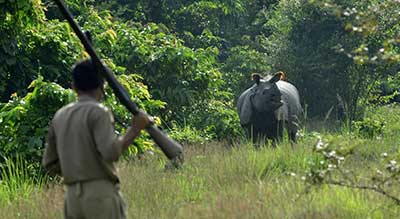Date: 14/10/2022
Relevance: GS-3: Conservation, environmental pollution and degradation, environmental impact assessment
Key Phrases: Assisted Natural Regeneration, Dangerous Tipping Points, Transformation Of World Consumption Patterns, Technological Optimism, Deforestation-Ending Climate Commitment, Net Zero Deforestation Goals, Biodiversity Crisis, Nature-Based Solutions,
Why in News?
- As per a study published in the journal Science, the earth may have already passed through five dangerous tipping points due to the 1.1 °C of global heating caused by humanity till date.
Key Highlights:
- Calls for developing and transferring technologies to support action on climate change have become louder worldwide but the technology alone is unprepared to deal with the challenge and a transformation of world consumption patterns in collaboration with a zero-emission strategy is needed.
Do you know?
- Tipping point:
- IPCC defines a tipping point as a "critical threshold beyond which a system reorganizes, often abruptly and/or irreversibly".
- It can be brought about by a small disturbance causing a disproportionately large change in the system.
- One set of definitions of "tipping points" also requires self-reinforcing feedback, which could lead to changes in the climate system which are irreversible on a human timescale.
Can technological optimism meet the goals of energy transformation?
- The technological optimism was promoted at COP26 but every technological
solution discussed at COP26 depends on just three resources:
- nelectricity (non-emitting electricity generated by hydropower, renewables or nuclear fission),
- carbon capture and storage (CCS)
- biomass
- However, the total demand for these resources required by the plans cannot be met by 2050 and at the given rate, the world will take nearly 400 years to transform the energy system.
- Although there was the deforestation-ending climate commitment at COP26 , the nature of the pledge was vague.
- Countries may easily attempt to achieve their ‘net zero deforestation goals’ through monoculture farming, but this won’t be of any help rather would aid in loss of species diversity.
How can forest conservation help in climate change mitigation?
- Climate action requires the same amount of investment in forest conservation as is in new technology transfers as the climate change crisis is intertwined with biodiversity crisis.
- As per the scientists, naturally preserved forests are 40% more effective than planted ones.
- Forests, which are home to 80% of terrestrial wildlife absorb a net 7.6 billion metric tonnes of CO2 a year.
- A new study has found that their biophysical aspects have a tendency to cool the earth by an additional 0.5%.
- The conservation of forests, along with other nature-based solutions, can provide up to 37% of the emissions reductions needed to tackle climate change.
- Green infrastructure (salt marshes and mangroves) are 2-5 times cheaper than grey infrastructure (Seawalls, dams, breakwaters, etc.).
- The annual gross carbon emission from tropical tree cover loss between 2015 and 2017 was equivalent to 4.8 billion tonnes and this causes more emissions each year than 85 million cars will do in their lifetime.
Conservation of natural sinks:
- The IPCC Land Report estimates that land serves as a large CO2 sink.
- There is evidence that a large proportion of the required emission reductions can be achieved by conserving natural sinks, improving biodiversity protection, and restoring ecosystems.
- Preserving earth’s cyclical processes by protecting terrestrial ecosystems and natural sinks and transformative agricultural practices under the leadership of indigenous people and local communities is a far more equitable and cost-effective way of tackling the climate crisis than it is being done now.
Way Forward:
- Thumb Rule: There is a rule of thumb in the tree-planting world i.e., one should plant the right tree in the right place‘for the right reason’. This will make tree-planting activities friendly to local biodiversity. The outputs of such tree-planting or restoration initiatives should also be monitored.
- Assisted natural regeneration: Let the forests come back on their own through protection. This is called assisted natural regeneration which is a cheaper and more effective method. The task of halting deforestation and protecting existing forests should be the utmost priority
- Incentivisation of local communities: Incentivise the local communities appropriately and ensure fund flow for restoration interventions, duly providing for the adequate participation of local people in planning and implementation through local institutions.
- Political priority and appropriate policy interventions: This inclusive approach with political prioritisation at all levels of governance will not only help reduce emissions but also help to conserve and increase the forest cover to ‘a third of our total area’.
Conclusion:
- The climate crisis is intertwined with other complex issues like the biodiversity crisis and thus, demands a multi-pronged, interconnected climate solutions.
- Tech-centric mitigation conversations leave forest economies and conservation and forests, which are the best carbon removal instruments, to the ideological fringes of the climate conversation.
- Thus, technology, at best, can assist us, not lead us, on the pathway to a sustainable, regenerative and equitable world.
Source: The Hindu
Mains Question:
Q. Technology, at best, can assist us, not lead us, on the pathway to a sustainable, regenerative and equitable world. Examine. (150 words).






















